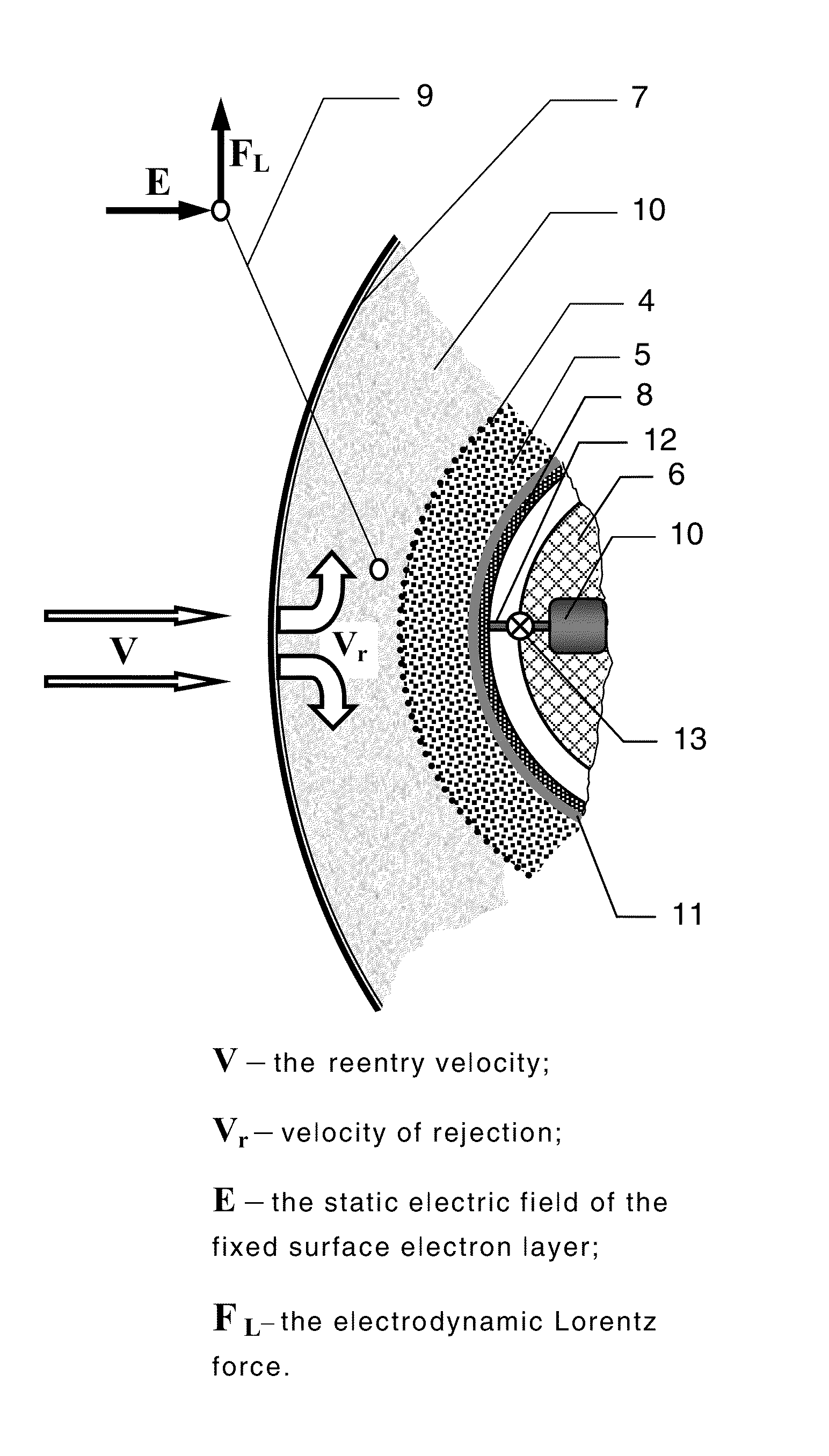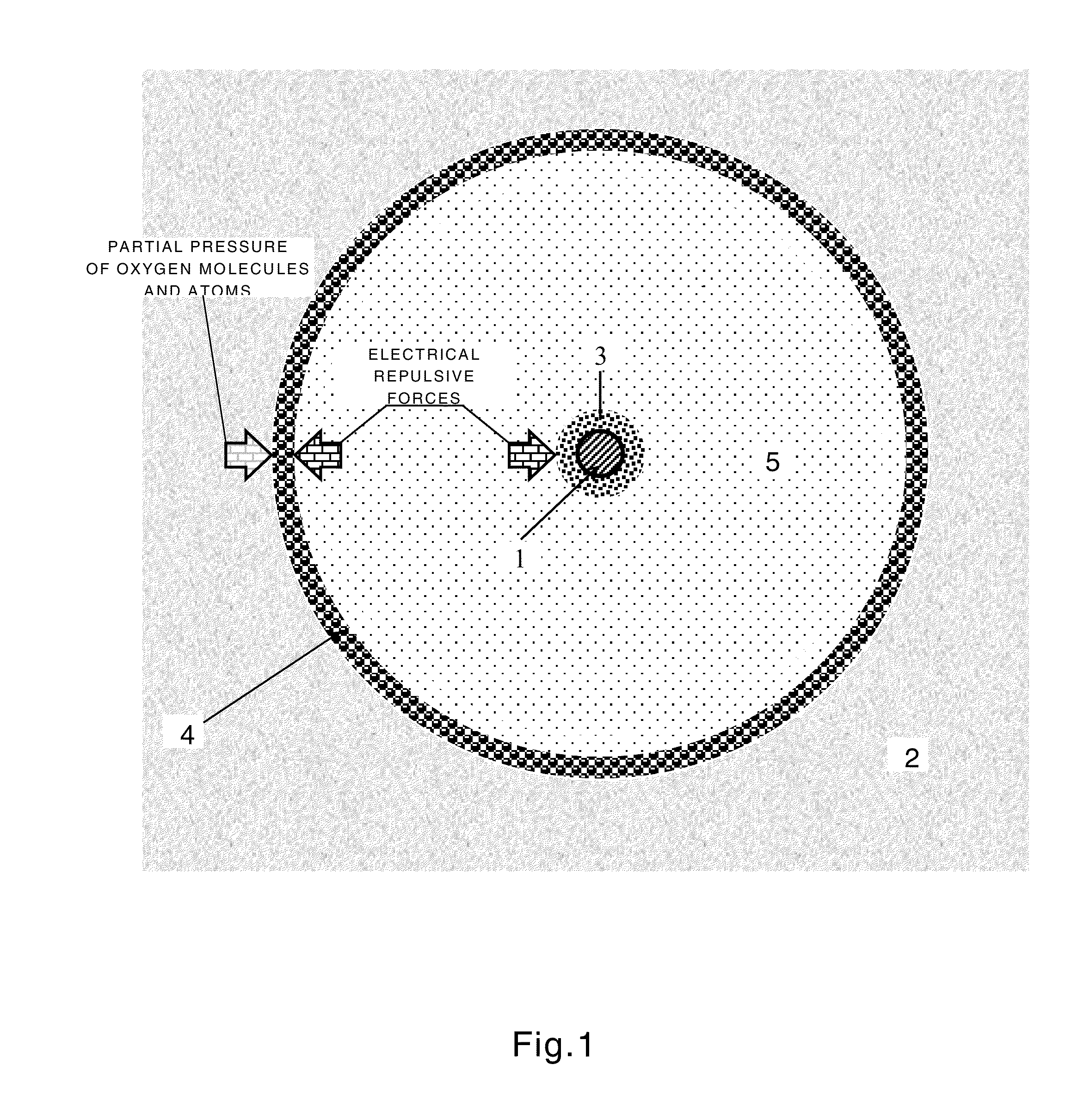Method and apparatus for the thermal protection of a space vehicle.
- Summary
- Abstract
- Description
- Claims
- Application Information
AI Technical Summary
Benefits of technology
Problems solved by technology
Method used
Image
Examples
Embodiment Construction
[0024]FIG. 1 (1 / 3) shows a diagram explaining the principles of the electrodynamic combustion mechanism that acts on the surface of a burning alkali metal droplet (1). It is a schematic in which the vapor-phase combustion process of the metal vapor (5) in gaseous combustion products of the fuel in oxygen (2) is shown.
[0025]The burning spray of the alkali metal was generated by means of injection and self-ignition of the liquid alkali metal into a fluid jet from the nozzle of the combustion chamber (see Information Disclosure Statement Form, Part 2). The fluid jet consisted of the products of the combustion of the fuel (kerosene) in oxygen (2).
[0026]This drawing shows the effect of the electrostatic Coulomb forces between two electron layers, the layer associated with the metal surface (fixed) (3) and the free electron layer, in the roughly spherical flame zone (4) surrounding the droplet. The fixed electron layer consists of a quasi-free electron gas of the metal that is bound to th...
PUM
 Login to View More
Login to View More Abstract
Description
Claims
Application Information
 Login to View More
Login to View More - R&D
- Intellectual Property
- Life Sciences
- Materials
- Tech Scout
- Unparalleled Data Quality
- Higher Quality Content
- 60% Fewer Hallucinations
Browse by: Latest US Patents, China's latest patents, Technical Efficacy Thesaurus, Application Domain, Technology Topic, Popular Technical Reports.
© 2025 PatSnap. All rights reserved.Legal|Privacy policy|Modern Slavery Act Transparency Statement|Sitemap|About US| Contact US: help@patsnap.com



